End Planned Obsolescence
Yesterday's breakthrough technology is today's obsolescence and tomorrow's garbage.
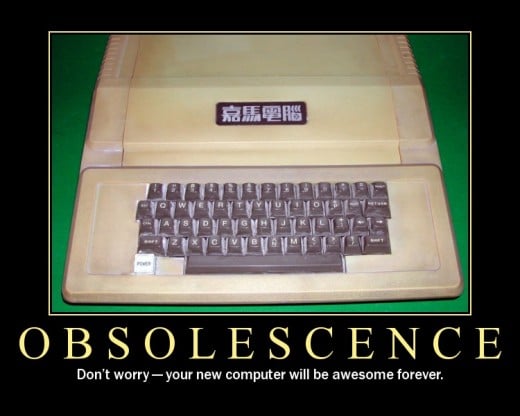
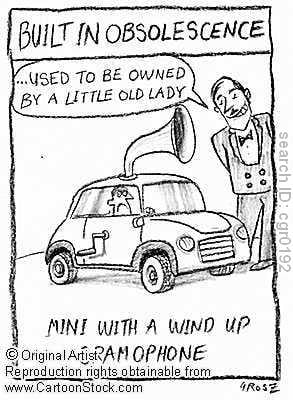
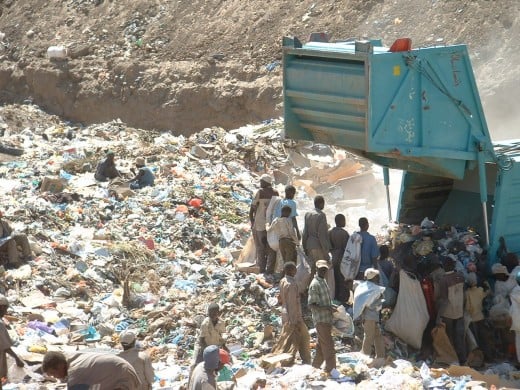


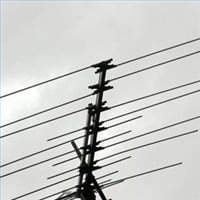
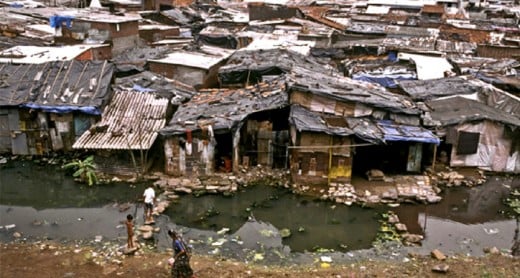
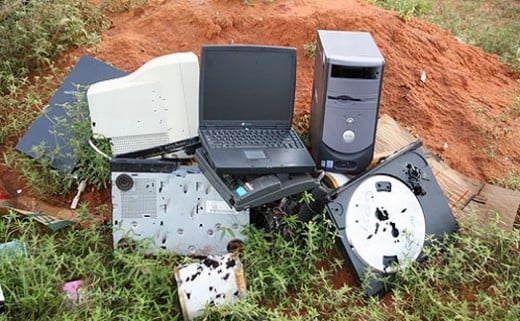
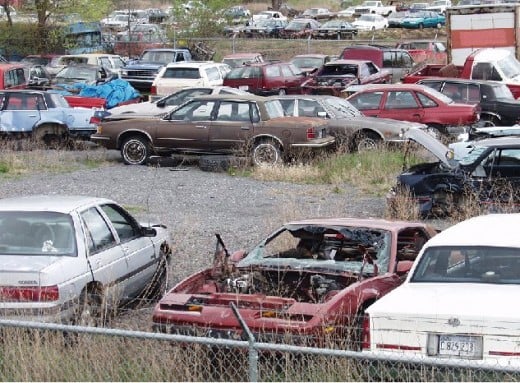
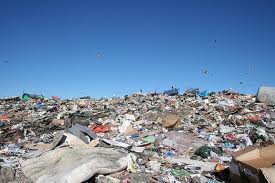
Standardize the Best and get rid of the rest
One of the chief and greatest contributors to pollution is the deliberate under-engineering of commodities in order for them to fall apart, break down or become obsolete due to advances shortly after the warranty period. In combination, the current period sees rapid advancements in technology that obsoletes quickly with the latest upgrades that on average cycle every eighteen months. This is especially true with computers. Recent advances in television from cathode ray tubes to plasma and liquid crystal flat screen format has caused a lot of dumping of cathode ray format screens that have contributed heavily to pollution. Other electronics like cell phones and game consoles add even more as each round of improvement means a run on the new devices and a dumping of the now obsoleted ones. Some are resold and thus recycled, but most are just dumped. Add to the pollution, cars, trucks, plastic wrap and all the refuse of various descriptions.
Over the last year or two, there has emerged an electronics recycling business that will pick up or receive used and broken down electronics like computers, TVs, game consoles, VCRs, DVD players, CD players, cell phones and the like. These are usually collected for free and then shipped offshore to Hong Kong from Vancouver, BC where people in China's capitalist enclave are hired to dismantle all of these for various elements like lead solder, gold and other useful elements and items. The methods used generate a lot of toxins that end up in the atmosphere, land and water to the point where the health of the workers is adversely affected, the land and water ruined beyond redemption. It is done here due to cheap labor costs, no environmental controls and in the remote locations in the Chinese countryside away from snooping and prying eyes. On our side we get a warm fuzzy feeling of doing the environment some good by recycling spent or no longer desirable electronic commodities. Most people don't inquire beyond this and those that do soon find a public relations exercise and lots of deception. Further, when the situation is policed in one area, the impromptu factories close promptly and relocate to continue in business elsewhere.
The manufacture of electronics and as far as that goes; many other items create a lot of pollution in their manufacture. The by-products are often dumped into the environment with no consideration for anything such as wildlife and the health of the community. It eats into profits to clean up the mess, so it is disposed of as cheaply as possible. Often this means disposal via the commercial and domestic garbage pick and delivery to the landfill. Sometimes they get employees to illegally dump highly toxic materials. The environment is filled in the air, the ground and the water with thousands of chemicals, many of which are carcinogenic. All of these have found their way back into our bodies after moving up the food chain. All of them have spread around the world and can be found in ice fields as far removed as Greenland and Antarctica. Capitalist production has left an indelible imprint on the planet, world wide. The people have been left with the task of cleaning up, which many are now forced to do, not so much for cleaning up as for an income and a recycling of valuable metals.
The great task ahead of the working class after the winning of the revolutionary class struggle and the end of imperialist capitalism will be to create a sustainable world and clean up the staggering mess left by capitalist profiteering. As this has been ongoing for hundreds of years, a concerted effort will likely take as long unless some radical new method is developed to clean up the mess quickly. It also falls on the shoulders or the proletariat to use methods and develop others that are much safer and that don't produce so much waste and hazardous by-products. There is little doubt that much of this has already been discovered and ready to be implemented, but lies in wait for a better world governance in the form of a planned economy.
An absolute end must be put to planned obsolescence. If NASA can build space probes and telescopes that can survive for decades in the harshest environment known, then it seems reasonable that the same tactic can be used on Earth. Space vehicles and instruments can't afford to break down. There is no going back to the garage or repair shop at the drop of a pin. There is no replacement en route. Once launched, they not only have to hold together in a high G-force and bumpy launch ride, but last for decades while they coast toward their distant goals. The space probe and vehicle has to last and they usually do. This is an example that we can follow on Earth. Everyone knows about antiques that still work perfectly after several decades of use. They can be old radios, victrolas, or old 1913 model electric cars or even old model T's. Earlier antiques are steam powered trains that are still in use in China. These are the products of a bygone age that were designed to last. They were often over-engineered and not deliberately under-engineered as today’s commodities are, as newer, bolder, faster, smarter, better commodities are ready to flood the market. No sooner do we buy something than it becomes obsoleted due to a new advance. We can have newer and better, but they should be designed in a fashion where existing items can be upgraded where the upgrade is available. In the early days of the personal computer and also in the days of the vacuum tube, this is just what was done. It can be done again. That is what standardization was all about since its inception in the 18th century. All parts that become outmoded should be designed for maximum recyclability with minimum harm to the environment and our health.
Over the years there has grown a robust second hand recycling business that will resell DVDs, CDs, vinyl albums, books, gently used electronics like computers that are repairable, still working cathode ray TVs, CD players and gaming consoles. People have been reselling cars and trucks for almost as long as they have existed. But there is a furtive effort to curtail this for the solution of buying new and disposing of the old. Efforts are made to block sales of recycled commodities, partly because this competes with new line sales and partly because new sales must continue to keep profits increasing. In any major city you will see people selling recycled commodities in order to survive, especially in an economy where traditional employment is rapidly disappearing. But there are many blocks set in place to discourage this and the police are used to "clear out" the quasi legal sellers. Businesses that are fully silenced to sell from store fronts are also put through hurdles designed to frustrate and cut off business as this cuts into first line new commodities for sale virtually next door. The second line resellers are crucial in helping to sustain the environment in recycling still working commodities, especially to others who can't afford first line newly released commodities. This does nothing to circumvent under-engineered obsolescence, but it does curtail fashion based planned obsolescence to a good degree.
They tore down paradise and put up a landfill
- BBC News - 'Apocalyptic' island of waste in the Maldives
Although the Maldives are known as an unspoilt tourist paradise, the islands struggle with managing their waste, as the BBC discovered on a visit to an 'apocalyptic' island waste dump.
Going green includes eliminating planned obsolescence

Selecting all the best technology out of all the available variants is another tactic. The best technology has been around for a long time and in many cases is still working for us. Items like the poly-phase motor invented by Tesla at the turn into the 20th century are still with us and are still being made simply because there is nothing better to do the job, whether running the fridge or hoisting us in elevators and escalators or a myriad of other uses. Some old technology that many thought was history has been revived. One of these is the phonograph record player that enjoyed a revival with the emergence of rap. Now a commodity thought to have been eclipsed by CDs has a new life and is popular again among audiophiles. Another commodity enjoying a revival is the vacuum tube. One can even take a course on vacuum tube design. The vacuum tube has a future in space, especially where a natural hard vacuum exists, no glass enclosure is needed and they are relatively easy to make and service. Integrated circuits though used in hostile environments, easily break down and cannot have individual diodes, transistors or other electrical parts replaced without replacing the entire unit. Vacuum tube circuitry can have individual parts replaced and in space even individual components replaced in a single unit. There are many other old technologies around that are still in use and will continue to be for the foreseeable future. There will be new ideas, but these can incorporate what we have learned on how best to do things.
Recycling absolutely everything is an axiom that we still have to learn to take to heart. We should not make anything that cannot be recycled. A good example of this is nuclear waste. Unless we can invent a way to recycle nuclear waste without harm, we should not be making any. All metals, glass, paper, wood, some plastics, fabric and organic "waste" are totally recyclable. There is no excuse whatsoever to not reuse them. As an example, it takes only 10 percent of the energy to recycle aluminum as it does to mine and process aluminum from raw ore. The same is true for iron. Other metals have a much higher energy output to obtain them from the raw ore and one of them is fissile uranium which we should not be mining at all; at least in this stage of things where we can't recycle the waste.
Removing carbon from the atmosphere has been done by shellfish for eons as they turn it into calcium carbonate in their shells. We do this when our bodies make bone. The process that nature uses can be duplicated in the lab and scaled up in order to gobble up all the CO2 that we have been injecting into the atmosphere. We put it there and it us up to us to take it out. The problem is now so severe that planting trees alone is not enough. We will have to take direct action. If industry is unwilling and governments drag their feet, then it is we, the people that will have to grab this one by the horns and do the job!
Before there were cars and trucks, people literally used horse power. They also used trains, sailing ships and lighter than air ships. Today, where much of the population lives in concentrated areas, the answer has to be rapid transit, trains and buses instead of millions of individual cars clogging up the roads and polluting the atmosphere. Instead of short hop jets, the idea of reinventing the blimp and dirigible that is solar powered is a viable one. Jacques Cousteau invented a type of reverse vortex sail that drives a turbine and can sail straight against the wind. In fact the sale operates at peal efficiency against the wind. This device was installed on the Alcyone, his flagship. It can be set up and scaled up to power large freight ships. The big thing today is the re-emergence of the electric car for the umpteenth time. This idea has been tried many times and quashed by oil interest lobbyists that had them removed from the road and destroyed. Now that they are re-emerging, will it be permanent? It can be if the people put their foot down on the question and say no to the oil lobbyists and capitalist interests that are ruining the planet. There is a lot of PR on the environment currently and we have to keep up the pressure and not burn out, as that is what they are relying on. We need to learn this important lesson of history instead of see-sawing back and forth between gas guzzlers and electric over and over again and paying the piper all the way for each round while the environment goes down the toilet.
The development of better energy sources like, solar, piezoelectric, wind, geothermal and micro generators must be encouraged. There is no arcane sci-fi type of technology involved here. Most of it is off the shelf with more modern materials. Some of the ideas are centuries old and have been successfully used by people like the Dutch who were using windmills as long ago as the 12th century. Solar energy has been used to cool cities and homes in Iran for centuries. Iceland runs most of its power needs on geothermic energy. We have no excuse to not use these sources. Laziness is not an option either. All it takes is the resolve and commitment to develop and use these no matter what! For the future and with current understanding, we can develop lower power consumption technology, use L.E.D.s for lighting, make better and longer lasting batteries and rely on solar recharging. Everything can be done with environment and health in mind and engineered for the long term.
Engineering for the long term means that planned obsolescence is out. What will it mean when we no longer have to make all that shoddy, under-engineered stuff that falls apart and keeps the economy going, adds pollution to the environment and people working like mad? It means that with all our sophisticated methods for making things, the work week will shrink drastically. It means that the landfills will not fill up and overflow into our bodies. There will be much less pollution. But in a planned economy this does not have to translate into starvation because of the loss of work time translated into and hourly wage, which would shrink by at least 90 percent. It means that there will be a shift toward a major increase in leisure time without a loss in living standard. If the economy were socialized, then the flood of good commodities will be universally available. It is a paradigm shift to humanism and away from profit. This is especially true as mechanization and robots produce most ot the usable goods and hard labor by people is less and less required to produce use value. People can then pursue their real interests such as gardening, sports, the arts, entertaining, travel, research and all else they enjoy that is not "work"; that abhorrent necessity under capitalist modes of production and monetarist order of society that is required in order to make enough money to cling desperately to life for another two weeks while banks and CEOs pocket the majority of the wealth created by the actual producers. Most labor type work is highly mechanized today, employing the heavy use of robotics. What used to take thousands of people to accomplish can now be done by a single person managing and army of robots through a computer network to produce the same amount of commodities and in far less time. Can you see what this all means? Join those of us who are aware and committed to a better life for all!








